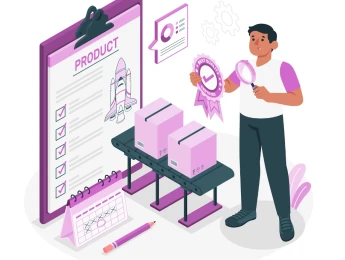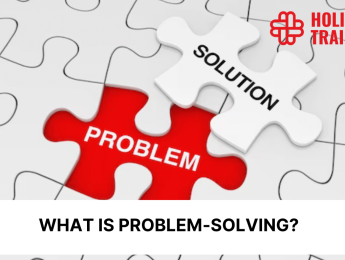- Table of Contents
- Introduction
- What is Total Quality Management? (TQM)
- Table: Comparison of Quality Management and Total Quality Management
- Key Principles of Total Quality Management
- Customer Focus
- Total Employee Involvement
- Process-Centred
- Integrated System
- Strategic and Systematic Approach
- Continual Improvement
- Fact-Based Decision Making
- Communication
- 15 Benefits of Total Quality Management
- Enhanced Customer Satisfaction
- Reduced Costs
- Improved Quality
- Employee Morale
- Better Decision Making
- Increased Efficiency
- Market Competitiveness
- Improved Supplier Relationships
- Regulatory Compliance
- Reduced Rework and Scrap
- Enhanced Reputation
- Employee Development
- Innovation
- Sustainability
- Customer Retention
- How to Leverage TQM at Your Company
- Commitment from Leadership
- Employee Involvement
- Customer Focus
- Training and Development
- Process Documentation
- Set Clear Goals
- Use Quality Tools
- Measure Performance
- Continuous Improvement
- Effective Communication
- Supplier Collaboration
- Customer Engagement
- Benchmarking
- Recognition and Rewards
- Review and Adjust
- The Future of Total Quality Management
- Integration with Digital Technologies
- Focus on Sustainability
- Customer-Centric Innovations
- Global Quality Standards
- Enhanced Collaboration
- Employee Empowerment
- Data-Driven Decision Making
- Customisation and Personalisation
- Enhanced Training Programs
- Lean and Agile Methodologies
- Regulatory Compliance and Risk Management
- Holistic Approach to Quality
- Cross-Functional Teams
- Focus on Value Creation
- Continuous Learning and Adaptation
- Conclusion
Introduction
Quality is the backbone of any successful organisation, defining the standards and performance expected by customers and stakeholders alike. Total Quality Management (TQM) is a holistic approach that emphasises continuous improvement, customer satisfaction, and the involvement of all employees in the quality process. This guide will explore TQM, its key principles, benefits, practical applications, implementation strategies, and future trends.
What is Total Quality Management? (TQM)
Total Quality Management (TQM) is a management philosophy that aims to embed quality awareness in all organisational processes. Originating in the 1950s and gaining widespread popularity by the 1980s, TQM focuses on long-term success through customer satisfaction and is achieved through the participation of all organisational members. It integrates fundamental management techniques, existing improvement efforts, and technical tools under a disciplined approach.
TQM revolves around the concept that the quality of products and services is the responsibility of everyone involved in their creation or consumption. It is not just the duty of a quality control department but of every employee, from the CEO to the frontline workers. This comprehensive involvement ensures that quality improvement is a continuous process.
Aspect | Quality Managment | Total Quality Management (TQM) |
Focus | Specific products or service quality | Overall organisational quality improvement |
Scope | Limited to Certain departments | Company-wide across all departments |
Approach | Reactive too problems | Proactive and preventive |
Employee Involvement | Primarily quality control team | All employees involved |
Customer Focus | Meeting basic customer requirements | Exceeding customer expectations |
Table: Comparison of Quality Management and Total Quality Management
Key Principles of Total Quality Management
TQM is built on several foundational principles, each contributing to the overall effectiveness of the quality management process. Here are the key principles of TQM:
Customer Focus
Understanding and meeting customers' needs is paramount. Customer feedback is continually sought and analysed to improve processes, products, and services.
Total Employee Involvement
All employees are involved in working toward common goals. Full commitment from all levels of staff is essential, and they are empowered to take responsibility for improving quality.
Process-Centred
A fundamental part of TQM is a focus on process thinking. Processes are defined and followed, and improvements are continually sought.
Integrated System
All parts of the organisation must work together. TQM integrates all organisational functions and processes to achieve continuous improvement.
Strategic and Systematic Approach
Achieving a strategic vision requires a systematic approach to process improvement. This involves setting clear quality goals and creating a detailed plan to achieve them.
Continual Improvement
Organisations must constantly work to improve their processes and systems. Continuous improvement drives the organisation towards higher quality and performance.
Fact-Based Decision Making
Decisions are made based on the analysis of data and information. Data collection and analysis ensure that decisions are grounded in objective evidence rather than assumptions.
Communication
Effective communication at all levels is essential for TQM. Communication helps in achieving clarity and understanding among employees about the processes and goals.
15 Benefits of Total Quality Management
Implementing Total Quality Management (TQM) brings a wealth of advantages that contribute significantly to an organisation's success. These benefits span various aspects of operations, from financial performance to employee satisfaction. Let’s explore these benefits in more detail:
Enhanced Customer Satisfaction
TQM strongly emphasises understanding and fulfilling customer needs. Organisations build stronger relationships and loyalty by consistently meeting or exceeding customer expectations. This focus leads to repeat business, positive word-of-mouth, and a solid reputation in the market. For example, companies that actively seek and incorporate customer feedback into their product development processes can tailor their offerings more precisely, ensuring higher satisfaction levels.
Reduced Costs
One of the primary goals of TQM is to identify and eliminate inefficiencies and waste within processes. This could involve streamlining production methods, optimising supply chains, or improving resource utilisation. The systematic approach to process improvement reduces unnecessary costs, leading to higher profit margins. For instance, lean manufacturing techniques, a component of TQM, help reduce overproduction, waiting times, and excess inventory, directly impacting the bottom line.
Improved Quality
Continuous improvement is at the heart of TQM. Organisations can significantly enhance the quality of their products and services by regularly evaluating and refining processes. This improvement is about meeting standards and exceeding them to delight customers. High-quality offerings satisfy customers and reduce the need for rework and returns, contributing to operational efficiency.
Employee Morale
TQM involves employees at all levels in quality initiatives, fostering a sense of ownership and responsibility. When employees feel their contributions are valued and impactful, their job satisfaction and morale improve. High morale often translates into better performance, reduced turnover, and a more collaborative workplace culture. For example, a company encouraging employees to participate in quality circles or suggestion programs can see increased engagement and innovative solutions.
Better Decision Making
TQM emphasises data-driven decision-making, ensuring that choices are based on objective analysis rather than intuition. This approach minimises risks and uncertainties, leading to more effective and strategic decisions. Organisations implementing robust data collection and analysis systems can quickly identify trends, address issues before they escalate, and make informed choices that drive quality improvements.
Increased Efficiency
By focusing on process optimisation, TQM helps organisations operate more efficiently. Streamlined workflows, reduced cycle times, and optimised resource allocation contribute to higher productivity. In fact, according to Simplilearn, studies show that Total Quality Management influences 71.7% of productive behaviour. Therefore, having a comprehensive understanding of TQM and its implementation is crucial for business success. For example, a company implementing process mapping and analysis can identify bottlenecks and eliminate redundant steps, resulting in smoother operations and faster turnaround times.
Market Competitiveness
Organisations consistently delivering high-quality products and services gain a competitive edge in the market. Quality becomes a key differentiator, attracting customers who value reliability and excellence. This competitive advantage can lead to increased market share and profitability. For instance, brands like Apple and Toyota have built their reputations on quality, allowing them to command premium prices and strong customer loyalty.
Improved Supplier Relationships
TQM promotes collaboration with suppliers to ensure the quality of raw materials and components. Building strong relationships with suppliers based on mutual trust and shared quality goals can lead to better consistency and reliability in the supply chain. Organisations that work closely with suppliers to implement quality standards and continuous improvement initiatives can reduce defects, delays, and costs associated with poor-quality inputs.
Regulatory Compliance
Adhering to regulatory standards is crucial for many industries. TQM helps organisations establish processes that ensure compliance with industry regulations and standards, reducing the risk of legal issues and penalties. For example, in the pharmaceutical industry, stringent quality management practices are necessary to meet regulatory requirements for safety and efficacy, ensuring that products are fit for market release.
Reduced Rework and Scrap
By improving processes and quality control, TQM reduces the incidence of errors and defects. This reduction means less rework and scrap, leading to cost savings and more efficient resource use. Organisations implementing rigorous quality checks at each production stage can catch and correct issues early, minimising waste and ensuring that only high-quality products reach the customer.
Enhanced Reputation
Consistently delivering high-quality products and services enhances an organisation’s reputation. A strong reputation for quality attracts new customers, retains existing ones, and can even allow the organisation to enter new markets. Positive brand perception also builds trust, making launching new products and services easier. For instance, companies like Johnson & Johnson have maintained strong reputations for quality, which has helped them weather crises and maintain customer trust.
Employee Development
TQM involves continuous training and development of employees, ensuring they have the skills and knowledge to contribute to quality initiatives. This investment in human capital leads to a more competent and motivated workforce. Training programs focusing on quality tools, techniques, and problem-solving skills empower employees to take proactive roles in quality improvement, fostering a culture of continuous learning and development.
Innovation
A culture of continuous improvement and employee involvement fosters innovation. Employees are encouraged to think creatively and suggest new ideas for improving products, services, and processes. This innovative mindset can lead to breakthroughs that enhance quality and efficiency. Organisations that promote a culture of innovation often see faster adaptation to market changes and the development of cutting-edge solutions that set them apart from competitors.
Sustainability
Efficient resource use and waste reduction contribute to environmental sustainability, an increasingly important factor for modern businesses. TQM practices that focus on reducing waste, recycling, and optimising resource use lower costs and help organisations meet their sustainability goals. Companies prioritising sustainability in their quality management practices can improve their environmental footprint and appeal to environmentally conscious consumers.
Customer Retention
High-quality products and exceptional customer service lead to greater customer retention. Satisfied customers are more likely to remain loyal, reducing churn and increasing lifetime value. Organisations that focus on maintaining high standards of quality and continually improving customer experiences build long-term relationships that are essential for sustained success. Loyal customers often become brand advocates, further enhancing the organisation's reputation and attracting new customers through positive referrals.
By embracing TQM, organisations can unlock these benefits, leading to improved performance, competitive advantage, and long-term success. TQM's holistic approach ensures that quality is not just an isolated goal but an integral part of the organisational culture and strategy.
How to Leverage TQM at Your Company
Implementing Total Quality Management (TQM) in your organisation requires a strategic and systematic approach. To successfully leverage TQM, consider the following steps, each elaborated with practical insights and examples:
Commitment from Leadership
Leadership commitment is crucial for the successful implementation of TQM. Top management must endorse TQM and actively participate in its processes. This commitment demonstrates the importance of quality and motivates employees to follow suit. Leaders should communicate the vision, allocate resources, and establish quality as a core value. For instance, a CEO might regularly discuss quality metrics during meetings and lead by example by participating in quality improvement projects.
Employee Involvement
TQM thrives on the involvement of all employees. Engaging employees at every level fosters a sense of ownership and accountability for quality. Encourage employees to identify areas for improvement and suggest solutions. Implementing suggestion programs, quality circles, and team-based problem-solving sessions can facilitate this involvement. For example, Toyota’s “Kaizen” approach empowers employees to continually seek ways to improve their work processes, contributing to overall quality enhancement.
Customer Focus
Understanding and meeting customer needs is at the heart of TQM. Regularly gather and analyse customer feedback to identify their expectations and areas for improvement. Tools like customer satisfaction surveys, focus groups, and feedback forms are valuable for this purpose. Use this information to refine products and services. For instance, a software company might use customer feedback to enhance its product features and improve user experience, thereby increasing customer satisfaction and loyalty.
Training and Development
Continuous training and development are essential for equipping employees with the skills needed to contribute to quality initiatives. Provide training on quality management principles, tools, and techniques such as Six Sigma, PDCA (Plan-Do-Check-Act), and Root Cause Analysis. Regular workshops, online courses, and certification programs can help maintain high competency levels. For example, a manufacturing company might offer Six Sigma training to its staff, enabling them to identify and eliminate process inefficiencies.
Process Documentation
Clearly, documenting all processes is fundamental to TQM. Detailed process documentation helps standardise operations, making it easier to identify inefficiencies and areas for improvement. To ensure consistency, create process maps, standard operating procedures (SOPs), and work instructions. For example, a healthcare organisation might document patient care protocols to ensure that all staff follow the same procedures, thereby maintaining high standards of care.
Set Clear Goals
Establish clear, measurable quality objectives aligned with the organisation’s strategic goals. These objectives should be specific, achievable, relevant, and time-bound (SMART). Communicate these goals across the organisation and ensure that everyone understands their role in achieving them. For instance, a customer service department might set a goal to reduce average call resolution time by 20% within six months, aligning with the overall objective of improving customer satisfaction.
Use Quality Tools
Implement quality management tools to identify and solve quality issues. Tools like Six Sigma, PDCA, Root Cause Analysis, and Statistical Process Control (SPC) drive continuous improvement. For example, a logistics company might use Root Cause Analysis to investigate delivery time delays and implement corrective actions to streamline its processes.
Measure Performance
Measure and monitor performance against quality objectives regularly. Use key performance indicators (KPIs) to track progress and identify improvement areas. Data collection and analysis are critical for making informed decisions. For instance, a manufacturing firm might track defect rates and production efficiency to ensure that quality standards are met and identify trends requiring attention.
KPI | Description |
Customer Satisfaction | Measuring customer happiness and loyalty. |
Defect Rates | Tracking production and service defects. |
Employee Engagement | Assessing staff involvement and motivation. |
Process Efficiency | Evaluating workflow and resource optimisation. |
Supplier Quality | Monitoring the quality of supplied materials. |
Table 2: KPIs for Total Quality Management
Continuous Improvement
Foster a culture of continuous improvement where employees are encouraged to seek ways to enhance processes and quality regularly. Implementing Kaizen or continuous improvement initiatives can drive this culture. For example, a retail company might conduct weekly brainstorming sessions where employees propose ideas to improve customer service, leading to incremental but impactful changes. Be it any kind of team management — sales teams, software teams, or others — encouraging open communication and a mindset of ongoing improvement ensures that small changes accumulate into meaningful, long-term progress.
Effective Communication
Establish clear communication channels to ensure everyone knows TQM goals, processes, and progress. Regular updates, meetings, and newsletters can help keep employees informed and engaged. Transparent communication fosters trust and collaboration. For instance, a technology company might use an internal portal to share updates on quality initiatives and celebrate successes, keeping everyone aligned and motivated.
Supplier Collaboration
Work closely with suppliers to ensure the quality of inputs. Establish quality standards and collaborate on improvement initiatives. Building strong relationships based on mutual trust and shared goals can enhance the consistency and reliability of the supply chain. For example, an automotive company might collaborate with its suppliers to implement quality control measures ensuring that components meet stringent quality requirements.
Customer Engagement
Maintain open lines of communication with customers to better understand their needs and expectations. Engage customers in the quality process by involving them in product development, seeking feedback, and addressing concerns promptly. For instance, a consumer electronics company might involve customers in beta testing new products, gathering valuable insights that inform final product improvements.
Benchmarking
Compare your processes and performance with industry leaders to identify areas for improvement. Benchmarking helps adopt best practices and set realistic performance targets. For example, a hotel chain might benchmark its customer service standards against top-rated hotels, identifying gaps and implementing best practices to enhance guest experiences.
Recognition and Rewards
Recognise and reward employees for their contributions to quality improvements. Recognition programs, incentives, and awards can motivate employees to strive for excellence. For example, a pharmaceutical company might implement an annual awards program to honour teams that achieve significant quality improvements, fostering a culture of recognition and motivation.
Review and Adjust
Regularly review your TQM processes and make necessary adjustments to ensure they remain effective and aligned with organisational goals. Continuous evaluation and feedback loops are critical for sustaining TQM efforts. For instance, a financial services company might conduct quarterly reviews of its quality management system, identifying areas for improvement and implementing changes to enhance overall performance.
Leveraging TQM requires a comprehensive and committed approach that involves everyone in the organisation. By following these detailed steps, companies can embed a quality and continuous improvement culture, leading to enhanced performance, customer satisfaction, and competitive advantage. The journey of TQM is ongoing, requiring dedication, adaptability, and a relentless focus on excellence. Through strategic implementation and sustained effort, organisations can realise the full potential of TQM, driving long-term success and sustainability.
The Future of Total Quality Management
As we move into the future, TQM will continue to evolve, influenced by technological advancements, changing customer expectations, and global market dynamics. Here are some trends and future directions for TQM:
Integration with Digital Technologies
The rise of Industry 4.0 technologies, such as IoT, AI, and big data, will enhance TQM practices. These technologies enable real-time monitoring, predictive analytics, and automation, leading to more efficient and accurate quality management.
Focus on Sustainability
Environmental sustainability will become increasingly important. TQM practices will need to incorporate sustainable methods, focusing on reducing waste, improving resource efficiency, and minimising environmental impact.
Customer-Centric Innovations
As customer expectations evolve, TQM will emphasise customer-centric innovations. Organisations will need to be agile and responsive to rapidly changing market demands.
Global Quality Standards
With globalisation, there will be a greater emphasis on adhering to international quality standards. Organisations will need to ensure compliance with global regulations and standards to remain competitive.
Enhanced Collaboration
Collaboration across the supply chain will become more critical. Integrated quality management systems that involve suppliers, partners, and customers will be essential for maintaining high standards and achieving continuous improvement.
Employee Empowerment
Future TQM practices will focus even more on empowering employees. Organisations will invest in developing a skilled workforce capable of driving quality initiatives and fostering a culture of innovation and continuous improvement.
Data-Driven Decision Making
The availability of advanced analytics tools will enhance data-driven decision-making processes. Organisations will leverage big data and AI to gain insights into quality issues, predict trends, and make informed decisions.
Customisation and Personalisation
As customers increasingly demand personalised products and services, TQM will adapt to ensure that processes can efficiently handle customisation while maintaining high quality.
Enhanced Training Programs
Continuous training and development will be pivotal. Organisations must implement comprehensive training programs that keep pace with technological advancements and evolving quality standards.
Lean and Agile Methodologies
The integration of Lean and Agile methodologies with TQM will become more prevalent. These methodologies complement TQM by focusing on waste reduction, efficiency, and rapid change response.
Regulatory Compliance and Risk Management
With increasing regulatory requirements, TQM will need to incorporate robust compliance and risk management strategies. Organisations will focus on proactive measures to prevent quality issues and mitigate risks.
Holistic Approach to Quality
Future TQM will take a more holistic approach, considering not just the quality of products and services, but also the overall customer experience, ethical practices, and social responsibility.
Cross-Functional Teams
The use of cross-functional teams in quality initiatives will become more common. These teams will bring diverse perspectives and expertise, leading to more innovative solutions and effective quality management.
Focus on Value Creation
TQM will increasingly emphasise creating value for customers and stakeholders. Organisations will seek to understand and enhance the value proposition of their products and services.
Continuous Learning and Adaptation
The dynamic nature of the global market will require organisations to continuously learn and adapt their TQM practices. Flexibility and agility in quality management will be critical for sustaining long-term success.
Conclusion
Total Quality Management (TQM) is a powerful approach that can transform organisations by embedding quality into every aspect of their operations. This guide provides a comprehensive overview of TQM's potential, from understanding its core principles to leveraging its benefits, implementing it effectively, and anticipating future trends. By committing to TQM, organisations can achieve higher levels of customer satisfaction, operational efficiency, and competitive advantage. The journey towards quality excellence is continuous, requiring dedication, collaboration, and a willingness to innovate and adapt. Embracing TQM enhances the quality of products and services and fosters a culture of continuous improvement that drives long-term success.
Implementing TQM is not a one-time effort but an ongoing process that evolves with the organisation and the market. By focusing on the principles of TQM, engaging employees, and continuously seeking improvement, organisations can ensure that they remain competitive and responsive to the ever-changing demands of the global marketplace.
To deepen your understanding and effectively implement TQM in your organisation, consider enrolling in our Quality Management Strategies course. This course offers practical insights and tools to master quality management and drive sustained organisational excellence.

























